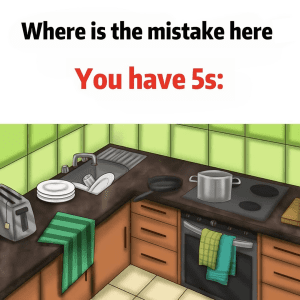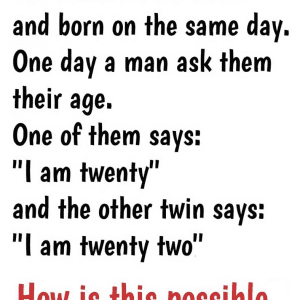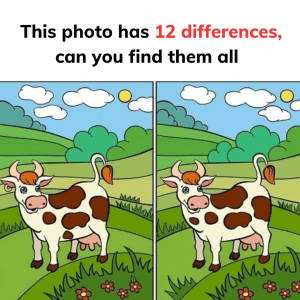Have you ever stumbled upon a brain teaser that seems straightforward at first but turns out to be a little more complex? This “count the squares” puzzle is one such challenge. At first glance, it might seem easy, but once you start counting, you’ll realize there’s more to it than meets the eye. Ready to test your observation skills and logical thinking? Let’s dive in, but be warned—most people don’t get it right on their first attempt!
Why Counting Squares Is Harder Than It Looks

You might think counting squares is simple, but this puzzle has a way of tripping people up. Why? It’s all about how our brains interpret overlapping shapes and hidden patterns. In this puzzle, squares are layered and embedded within each other, creating illusions and drawing our eyes to some squares while hiding others.
Common Mistakes People Make When Counting Squares
Most people miss a few squares on their first try. Here’s why:
- Overlooking Small Squares: Often, people see the big squares right away but ignore smaller ones formed at intersections or within larger squares.
- Double-Counting: When squares overlap, it’s easy to count the same area more than once, especially if it’s part of a bigger square.
- Missing Embedded Squares: Some squares are nested within others, which makes them easy to overlook. Without careful examination, they’re almost invisible!
- Rushing Through the Puzzle: Many people quickly guess, eager to see if they got it right. But rushing through this puzzle almost guarantees you’ll miss a few squares.
So, how do you make sure you count every single square? Follow these steps for an accurate count!
Step-by-Step Solution: Counting the Squares Correctly
To find the correct answer, you’ll need a systematic approach. Let’s break it down.
Step 1: Identify the Largest Squares First
Start by locating the biggest squares in the image. These are usually the easiest to spot and provide a foundation for counting smaller squares.
- Count the outermost squares: These are the largest squares that form the frame of the entire arrangement.
- Identify each unique large square: Note each square’s size and position to avoid double-counting later on.
Step 2: Look for Overlapping Squares
Once you’ve counted the big squares, move on to the overlapping areas. This is where things get tricky!
- Find smaller squares formed by intersections: The points where lines cross often form new squares. Pay close attention to these intersections, as they can create smaller, easy-to-miss shapes.
- Separate the squares by size and position: Try organizing them mentally or on paper. Count squares that only appear in overlapping sections and those formed within the layers.
Step 3: Count the Embedded Squares Within Larger Ones
Next, focus on squares within other squares. These nested shapes are easy to miss, but they’re crucial for getting the right count.
- Check each square for smaller squares inside: Go through each square you’ve identified and check for embedded shapes.
- Tally each unique square: Keep track as you go to ensure you’re not counting the same square twice. Some people find it helpful to keep a running list to stay organized.
Step 4: Double-Check Your Count for Accuracy
Once you think you’ve found all the squares, double-check your work. Many people find that they missed a few squares on the first or second attempt, so going back over the image is essential.
- Review each layer: Start from the outer layer and work inward, ensuring every square is accounted for.
- Verify your total count: After counting each square, compare your total to see if you missed any.
The Final Answer: How Many Squares Are There?
If you’ve followed each step carefully, you should arrive at the answer: 15 squares.

Here’s how those 15 squares break down:
- Five larger squares: These squares form the main structure of the image.
- Additional smaller squares: Smaller squares are formed by overlapping edges and intersections.
- Nested squares within larger shapes: These hidden squares make up the rest, creating a total of 15 unique squares.
If you got the answer right, congratulations! You’ve successfully tackled a brain teaser that trips up most people on the first try. This puzzle challenges your spatial awareness and attention to detail, two essential skills in solving visual problems.
Why Puzzles Like This Benefit Your Brain
While puzzles are fun, they also provide excellent mental exercise. Counting squares in this way requires patience, close attention to detail, and systematic problem-solving—all valuable skills for everyday life. Here’s how puzzles like this one can sharpen your mind:
- Improving Attention to Detail: Finding each square forces you to look at every line and intersection, training your mind to focus on details.
- Enhancing Spatial Awareness: Puzzles like this strengthen your ability to visualize and mentally manipulate shapes, a useful skill in problem-solving.
- Boosting Problem-Solving Skills: Working through this puzzle helps you learn to think critically and approach challenges systematically.
So, next time you’re feeling bored, try tackling a visual puzzle like this one. Not only will it entertain you, but it will also give your brain a beneficial workout!
Share Your Answer and Challenge Your Friends
Think you’re a pro at counting squares? Share your experience in the comments! We’d love to hear how many squares you counted before reading the solution. And if you enjoyed this puzzle, why not challenge a friend? See if they can solve it faster—or if they’re stumped by the same tricks!
Conclusion: Counting Squares, Counting on Patience
This square-counting puzzle may look simple, but it reminds us that there’s always more than meets the eye. By slowing down and examining things carefully, you can often see details you might otherwise miss. Puzzles like these teach us the value of patience and the importance of double-checking our work, especially when we think we have the right answer.
So, next time you come across a brain teaser, remember to slow down, examine it carefully, and embrace the challenge. There’s a good chance it’s trickier than it seems, but with a little patience, you’ll see through the illusion and find the answer. Happy puzzling!


